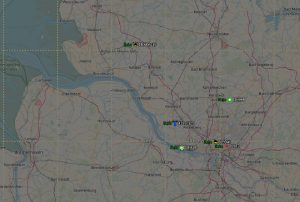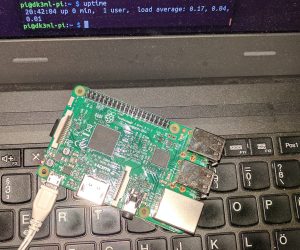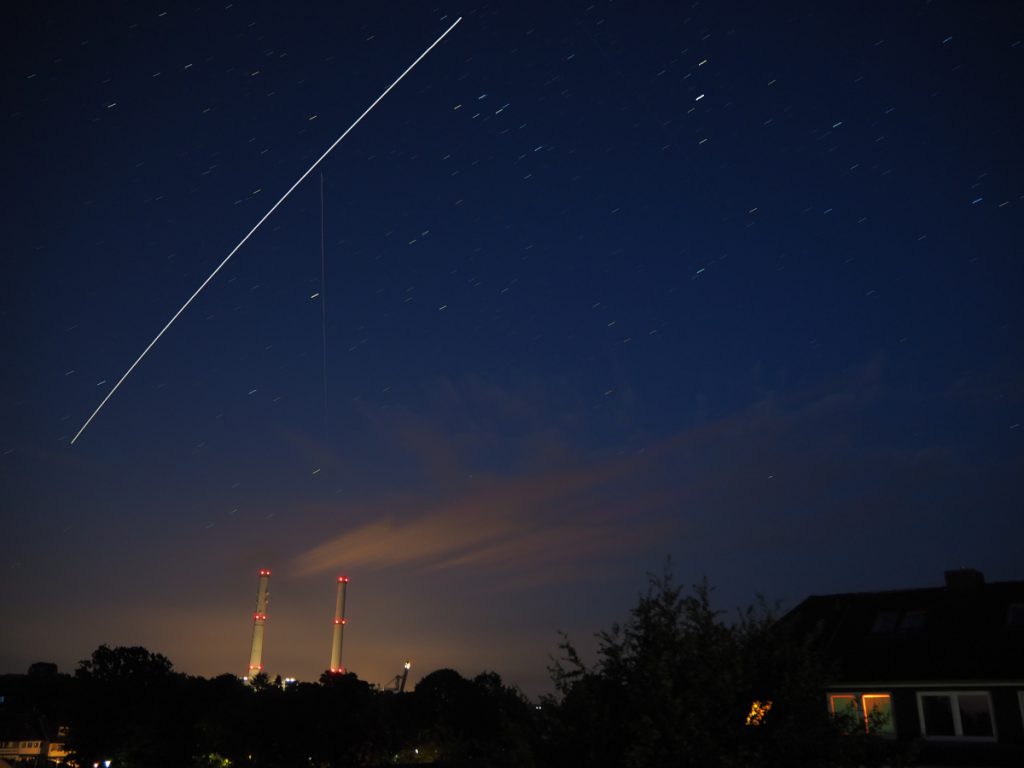 Working the APRS digipeater on the ISS is not hard, but it requires some planning and knowledge. It took me a lot of reading, trial and error until I made my first successful contact some years ago. Maybe I can save somebody’s time a bit with this article. Would be great to get some feedback, if it was helpful or if there are any further questions.
Working the APRS digipeater on the ISS is not hard, but it requires some planning and knowledge. It took me a lot of reading, trial and error until I made my first successful contact some years ago. Maybe I can save somebody’s time a bit with this article. Would be great to get some feedback, if it was helpful or if there are any further questions.
Install Golang on a Raspberry PI
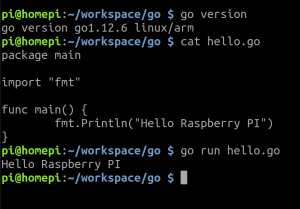 This is more a note to myself and a very short guide (without any comments or explaination) how to install golang on a Raspberry PI. Maybe it’s useful for somebody else, too.
This is more a note to myself and a very short guide (without any comments or explaination) how to install golang on a Raspberry PI. Maybe it’s useful for somebody else, too.
Continue reading
SSTV von der ISS empfangen und dekodieren
 Am Wochenende vom 8. bis zum 10.02.2019 fand wieder ein “Slow Scan Television (SSTV) Event” von Bord der Internationalen Raumstation ISS statt. In der Zeit gab es insgesamt 12 verschiedene Bilder zu empfangen. In diesem Artikel möchte ich beschreiben, wie man die Signale empfangen und auswerten kann. Ich beschränke mich dabei auf die Arbeit unter Linux, aber für Windows gibt es ähnliche Software, so dass das Betriebssystem eigentlich keine Rolle spielen sollte.
Am Wochenende vom 8. bis zum 10.02.2019 fand wieder ein “Slow Scan Television (SSTV) Event” von Bord der Internationalen Raumstation ISS statt. In der Zeit gab es insgesamt 12 verschiedene Bilder zu empfangen. In diesem Artikel möchte ich beschreiben, wie man die Signale empfangen und auswerten kann. Ich beschränke mich dabei auf die Arbeit unter Linux, aber für Windows gibt es ähnliche Software, so dass das Betriebssystem eigentlich keine Rolle spielen sollte.
Continue reading
Receiving and decoding SSTV from the International Space Station (ISS)
 During the weekend from 08.02.2019 to 10.02.2019, the ISS was sending SSTV (Slow Scan Television) pictures again. I have seen a lot of these pictures in the past, but I never managed to receive one so far, so I had to try it and it worked! Here is a short description, how I did it.
During the weekend from 08.02.2019 to 10.02.2019, the ISS was sending SSTV (Slow Scan Television) pictures again. I have seen a lot of these pictures in the past, but I never managed to receive one so far, so I had to try it and it worked! Here is a short description, how I did it.
Continue reading
Find out the next ISS pass with APRS
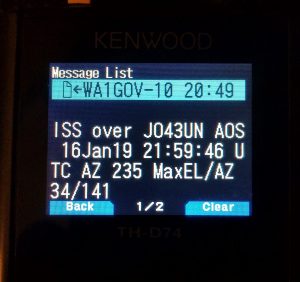 Recently I found a twitter post from WA1GOV about a new service he offers (). If you send an APRS message with the content “ISS” to the callsign WA1GOV-10, you will receive the next ISS pass at your location as a message.
Recently I found a twitter post from WA1GOV about a new service he offers (). If you send an APRS message with the content “ISS” to the callsign WA1GOV-10, you will receive the next ISS pass at your location as a message.
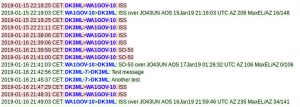 The only condition is that you are in the range of a TX-igate and that this TX-igate is aware of your position, so that it sends the message from the APRS-IS back to HF. I had some trouble with this. At the beginning I did not receive the ISS data, but I saw it at aprs.fi, so I sent a couple of more beacons and now I sucessfully received a message back. Beside the ISS there are also the following satellites available: AO-85,AO-91,AO-92,SO-50
The only condition is that you are in the range of a TX-igate and that this TX-igate is aware of your position, so that it sends the message from the APRS-IS back to HF. I had some trouble with this. At the beginning I did not receive the ISS data, but I saw it at aprs.fi, so I sent a couple of more beacons and now I sucessfully received a message back. Beside the ISS there are also the following satellites available: AO-85,AO-91,AO-92,SO-50
Running SDRPlay with gqrx on Ubuntu 18.10
 Since a long time, I was trying to get my SDRPlay running with gqrx on Ubuntu. A while ago, I successfully compiled everything I needed, but this lesson took hours and after the next Ubuntu update, it did not work anymore. Now I found a solution that is much easier. I did a lot of other changes on my system in parallel, so I am not 100% sure that the following steps are enough to get it running, but it works now for me.
Since a long time, I was trying to get my SDRPlay running with gqrx on Ubuntu. A while ago, I successfully compiled everything I needed, but this lesson took hours and after the next Ubuntu update, it did not work anymore. Now I found a solution that is much easier. I did a lot of other changes on my system in parallel, so I am not 100% sure that the following steps are enough to get it running, but it works now for me.
Antennen messen mit dem miniVNA pro unter Ubuntu Linux
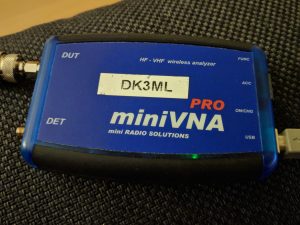 Seit mehreren Jahren leistet mir nun ein miniVNA pro treue Dienste beim Messen von Antennen und bei der Fehlersuche. Wer das Gerät nicht kennt, es handelt sich dabei um einen Vector Network Analyzator. Damit lässt sich (unter vielem anderen) das SWR einer Antenne messen. Der Frequenzbereich geht dabei bis 200 MHz, so dass auch Messungen an Antennen im 2m Band kein Problem sind. Für höhere Bänder gab es noch einen Extender, der ist allerdings leider nicht mehr verfügbar. Wer noch einen hat und loswerden möchte: Ich freue mich über eine Nachricht. Das schöne an dem Gerät ist, dass es sich über Bluetooth mit dem Smartphone verbinden lässt. So ist eine Messung direkt an der Antenne möglich, ohne ein langes Antennenkabel dazwischen. Auch kann die Antenne so an ihrem echten Standort gemessen werden. Lange Rede, kurzer Sinn, in diesem Artikel möchte ich zeigen, wie man den miniVNA pro unter Ubuntu Linux nutzt, um das SWR einer Antenne zu messen.
Seit mehreren Jahren leistet mir nun ein miniVNA pro treue Dienste beim Messen von Antennen und bei der Fehlersuche. Wer das Gerät nicht kennt, es handelt sich dabei um einen Vector Network Analyzator. Damit lässt sich (unter vielem anderen) das SWR einer Antenne messen. Der Frequenzbereich geht dabei bis 200 MHz, so dass auch Messungen an Antennen im 2m Band kein Problem sind. Für höhere Bänder gab es noch einen Extender, der ist allerdings leider nicht mehr verfügbar. Wer noch einen hat und loswerden möchte: Ich freue mich über eine Nachricht. Das schöne an dem Gerät ist, dass es sich über Bluetooth mit dem Smartphone verbinden lässt. So ist eine Messung direkt an der Antenne möglich, ohne ein langes Antennenkabel dazwischen. Auch kann die Antenne so an ihrem echten Standort gemessen werden. Lange Rede, kurzer Sinn, in diesem Artikel möchte ich zeigen, wie man den miniVNA pro unter Ubuntu Linux nutzt, um das SWR einer Antenne zu messen.
Continue reading
Analyzing the APRS infrastructure in the Hamburg area
Continue reading
Using GPIO with node.js on Raspberry PI 3
 Today, I want to try to use Node.js on a Raspberry PI to control the GPIO Pins. I will start with the “Hello World” of hardware projects: a blinking LED.
Today, I want to try to use Node.js on a Raspberry PI to control the GPIO Pins. I will start with the “Hello World” of hardware projects: a blinking LED.
Continue reading
Install Raspberry PI 3 headless (without keyboard and monitor) including SSH and WiFi
Whenever I want to install a Raspberry Pi, I don’t like to connect a keyboard and a monitor to setup SSH and WiFi. It’s much better to prepare the SD card on a normal PC and set up Wifi and SSH. Then you just need to put the SD card into the Raspberry PI and start it.
Continue reading

